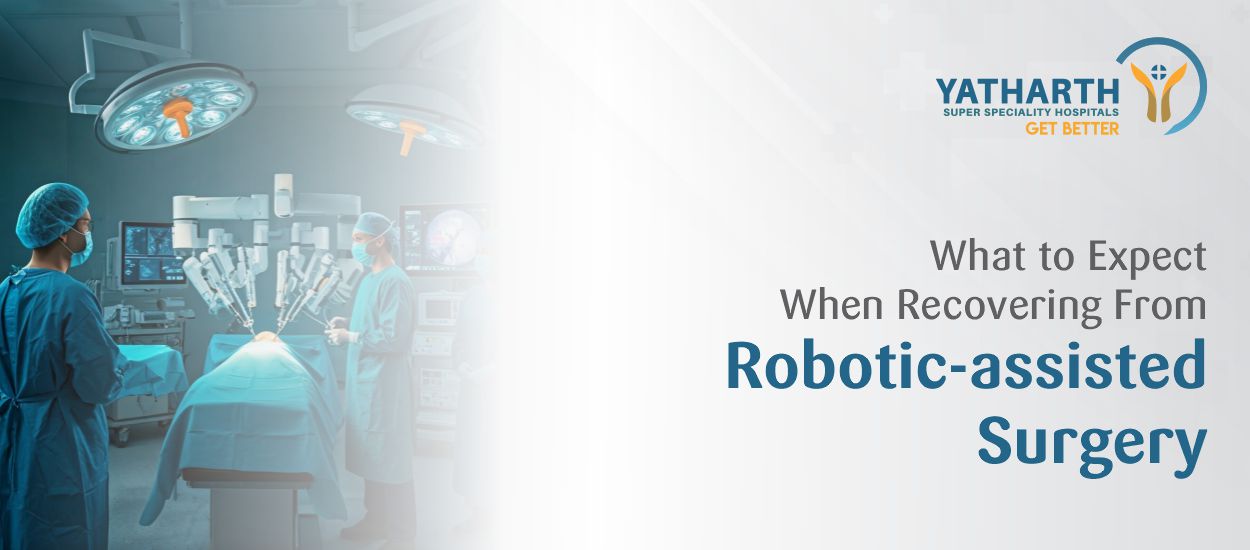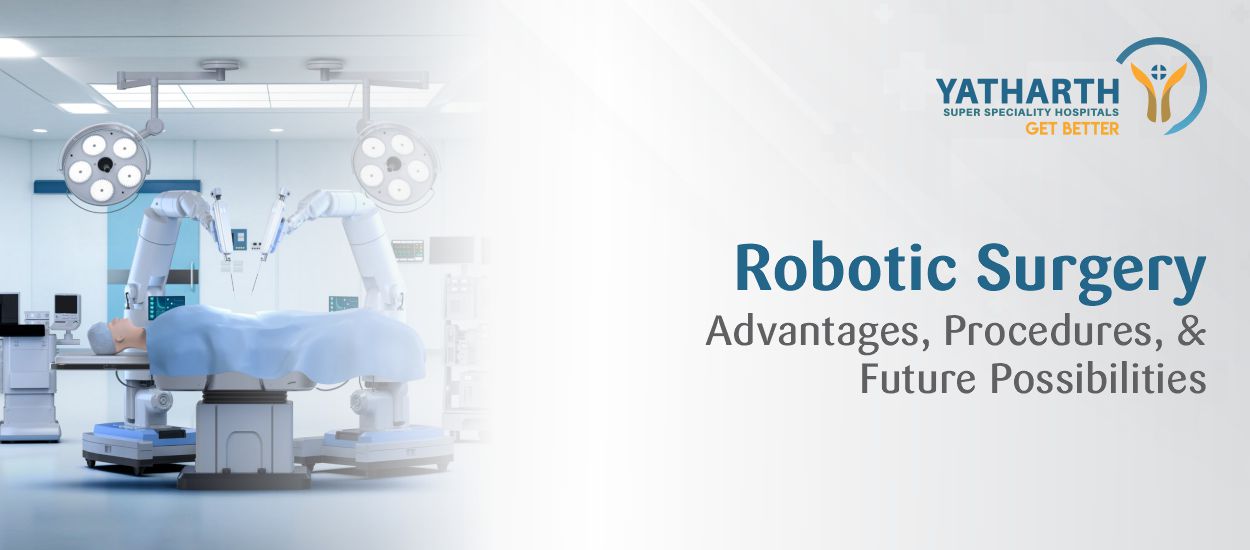An Overview
A minimally invasive procedure, robotic-assisted surgery has transformed surgical procedures and their results. Thanks to the use of advanced technologies, targeted outcomes are achieved with maximum accuracy and precision, minimum pain, few complications and faster recovery times. Robotic-assisted surgery may be recommended in common conditions and also for more advanced and complicated procedures like gastrointestinal, urology, cardiology, gynaecology and general surgeries.
However, surgical procedures, even if robot-assisted, make patients apprehensive. Therefore, a proper understanding of the benefits of robotic-assisted surgery can help allay concerns regarding these procedures. Awareness also helps in dispelling unwanted myths.
Some Important Points
The first point to remember is that robotic-assisted surgery helps surgeons perform minimally invasive operations by utilising robotic technology, rather than surgery done by robots. These tools usually include a console that helps a surgeon control robotic arms that are equipped with precise instruments and high-definition cameras. Robotic surgeries only need small incisions, unlike traditional open surgeries. Consequently, less pain, fewer complications and faster recoveries are the norm.
Recovery timelines vary as per the procedure undergone, the patient’s overall health and compliance with post-operative care guidelines. Coming to pain, while robotic-assisted procedures mean less pain vis-à-vis open surgeries, some pain is inevitable. The level of pain varies as per the patient and the procedure.
As for hospital stays, though many robotic-assisted procedures will be done on an outpatient basis, some need short hospitalisation, particularly after complex procedures or for patients having pre-existing conditions. Again, stays will be shorter than in open surgeries.
In the case of scars, robotic-assisted surgery only leaves small, relatively less noticeable marks, though these won’t have cent percent elimination. These scars fade and are barely visible after some time. The resumption of normal activities is much faster after robotic-assisted surgery. Further, intense exercises, heavy lifting and strenuous work should not be done until approved by your doctor.
Precautions in the Recovery Period
-
Managing incisions: Proper care of wounds is vital to prevent any infection. Always keep incisions dry and clean while avoiding any exposure whatsoever to water.
-
Pain management: It’s normal to experience mild or moderate pain near the incision site. Medications backed by proper rest will be useful in managing any discomfort. You can also expect some fatigue in the post-surgery period.
-
Return to your routine gradually: Only do some light activity such as walking. Until recommended by your doctor, avoid any strenuous activity.
-
Adhere to appointment schedules: It is crucial to ensure follow-up consultations with your doctor are done as scheduled to address any queries or concerns and facilitate the timely resumption of activities.
How Robotic-assisted Surgery Speeds Up Recovery
While a few points may have been covered earlier, some reiteration is in order. The primary benefits are:
-
Smaller incisions: Thanks to tiny incisions, there is limited tissue damage, less pain and swift healing.
-
Low blood loss: The higher precision of robotic tools lowers blood loss risk during surgery.
-
Accuracy and precision: Fewer complications.
-
Brief hospital stay: Patients may go home on the same day or following a short stay after many robotic surgeries.
-
Faster return to normalcy: Unlike conventional procedures, robotic-assisted surgery allows patients to restart their daily activities much sooner.
Guidelines for Smooth Recovery
Although stringent adherence to the doctor’s advice regarding medications, wound healing and your level of activity is expected, other guidelines must also be followed. These include:
-
Remaining active with due caution: Light activity like walking can help accelerate recovery by reducing stiffness and enhancing blood circulation.
-
Eating a balanced diet: Wholesome, nutritious meals are important to enhance energy levels and healing.
-
Staying hydrated: A well-hydrated body accelerates recovery and lowers postoperative fatigue.
-
Avoiding cigarettes and alcohol: The intake of both tobacco and alcohol could hamper healing and inflate the chances of complications.
-
Listening to your body: Always avoid any overexertion and rest periodically even if you feel fine.
When to Contact the Doctor
Complications following robotic-assisted surgery are generally rare. Yet, call your doctor if you feel:
• Severe pain that medications don’t relieve.
• Swelling, redness, warmth or leakage from the incisions.
• Chills or fever.
• Difficulty in breathing.
• Sustained nausea or vomiting.
Even if none of the above complications arise, do adhere to all your follow-up visits to the doctor. This will promote a safe, sound and speedy recovery.














